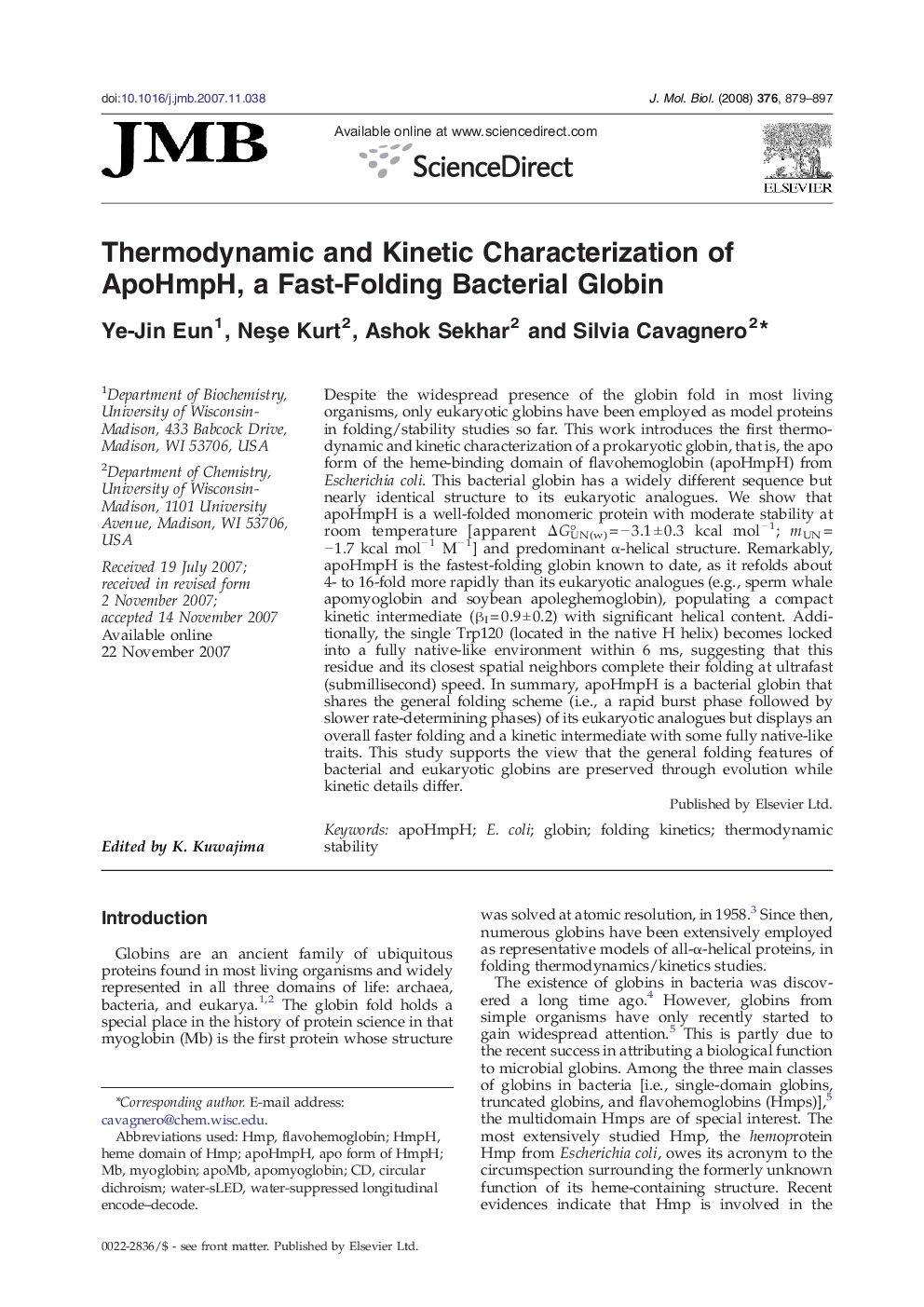| Article ID | Journal | Published Year | Pages | File Type |
|---|---|---|---|---|
| 2187961 | Journal of Molecular Biology | 2008 | 19 Pages |
Despite the widespread presence of the globin fold in most living organisms, only eukaryotic globins have been employed as model proteins in folding/stability studies so far. This work introduces the first thermodynamic and kinetic characterization of a prokaryotic globin, that is, the apo form of the heme-binding domain of flavohemoglobin (apoHmpH) from Escherichia coli. This bacterial globin has a widely different sequence but nearly identical structure to its eukaryotic analogues. We show that apoHmpH is a well-folded monomeric protein with moderate stability at room temperature [apparent ΔG°UN(w) = − 3.1 ± 0.3 kcal mol− 1; mUN = − 1.7 kcal mol− 1 M− 1] and predominant α-helical structure. Remarkably, apoHmpH is the fastest-folding globin known to date, as it refolds about 4- to 16-fold more rapidly than its eukaryotic analogues (e.g., sperm whale apomyoglobin and soybean apoleghemoglobin), populating a compact kinetic intermediate (βI = 0.9 ± 0.2) with significant helical content. Additionally, the single Trp120 (located in the native H helix) becomes locked into a fully native-like environment within 6 ms, suggesting that this residue and its closest spatial neighbors complete their folding at ultrafast (submillisecond) speed. In summary, apoHmpH is a bacterial globin that shares the general folding scheme (i.e., a rapid burst phase followed by slower rate-determining phases) of its eukaryotic analogues but displays an overall faster folding and a kinetic intermediate with some fully native-like traits. This study supports the view that the general folding features of bacterial and eukaryotic globins are preserved through evolution while kinetic details differ.
